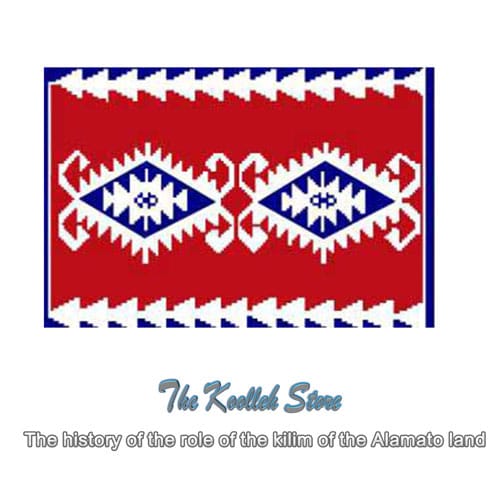The history of the role of the kilim of the Alamato land

One of the oldest fields of human activity is handicrafts and according to some historical documents, the history of handicrafts dates back to the Stone Age and in addition there is evidence that handicrafts and rural industries in different stages of economic development, namely pastoral economics. Agricultural economics and even industrial economics meet many human needs, and especially under the conditions of a closed economy, it is the most important factor in meeting the needs.
Iran’s traditional underlays, which include underlayment mats, underlayment felt, kilim, xylo, gabbeh and carpet types, have had a special economic, social and cultural status among all Iranian handicrafts from ancient times to the present day.
Due to its historical antiquity and similarity to the biological way of life of the people of the Iranian plateau, carpets and rugs have always been of great value. He also caresses the tired eyes of the dry landscapes of the deserts and mountains with his paintings and drawings.
The embossed kilim is a combination of plain kilim and carpet knot in its text, which, as the most important and original handicraft in Ilam province, has many features and advantages, and in this article, an attempt has been made to introduce it briefly.
The nature of the embossed kilim is based on the skill, experience and creativity of the simple kilim and carpet, and therefore requires the skill of the weaver in both weaves.
Ilam’s heroic region, which dates back to the ancient history of Iran and has a brilliant history in world culture, art and civilization, has long been one of the most important centers for the production of handicrafts such as traditional underlays and has worked hard since ancient times. Production of underlays such as carpets and rugs and other handicrafts such as ihrami, black tent, chit, as well as works such as metal and jewelry, ideas, thoughts, tastes and creativity, and finally faith in the Creator of the universe and his belief in indigenous culture in the form of products They have beauty as well as practical and consumer value.
Embossed kilim is the most important and significant handicraft and indigenous industry in Ilam in terms of originality and production. Due to the insignificant history of creativity of master weavers in this region in the field of kilim kilim weaving, significant progress has been made in various fields of production.
Embossed kilim, which is a combination of plain kilim and carpet knot in its text, is a wide scene of kilim plain, on which the weavers, with the thunder of their hands, poured rain on Jabin and turned a flower from flowers to caress the springs and polish the soul. Forgive.
The relief kilim revives the 8,000-year-old kilim discovered in Anatolia, Turkey (the oldest kilim), and the 2,500-year-old Pazyryk carpet (the oldest carpet), which evolves and is rapidly evolving today.
In this type of kilim, the background, the texture of the kilim (Sufi weaving) and its motifs are the complete knot of the carpet, which is naturally more prominent than the background after the weaving of the motifs.
Tribal and traditional life and livestock farming to provide a livelihood for the people of the Ilam region has long led to the use of wool and the growth and prosperity of related industries, especially plain kilims. They provide the wool used in the kilim from existing livestock, paint it in small dyeing workshops, and use it in production.
Due to their nomadic nature and constant movement, the nomads usually used horizontal huts that were easily assembled and located in the settlement areas of the tribe.
In terms of consumption, most of the simple kilims produced by women have their own consumption aspect and have been used in their daily lives.
During the weaving of plain kilim, Ms. Bafandaei from Zanjireh village of Ilam province, in a part of her weaving kilim, succeeds in performing a prominent role by using a carpet knot, which has been welcomed after being sent to the Iranian Handicrafts Organization.
Since then, with the efforts of the officials of Ilam handicrafts and the efforts of weavers, the ground for the growth of embossed kilims in this area has been provided.

